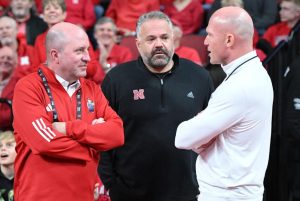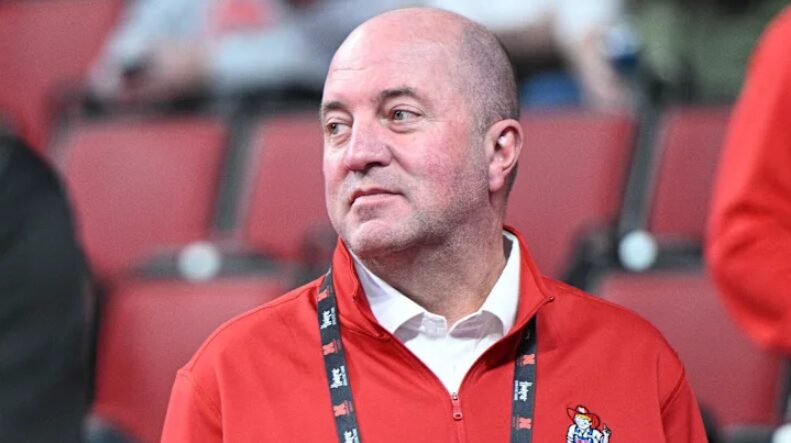Judge Approves House Settlement; Nebraska AD Troy Dannen Issues Statement
Judge Approves House Settlement; Nebraska AD Troy Dannen Issues Statement
A new chapter in collegiate athletics begins with the approval of revenue sharing and roster limits.

On Friday evening, a California judge approved the House v. NCAA settlement, ushering in significant changes, including revenue sharing and roster limits for college sports. Following the ruling, various stakeholders shared their responses.
“This decision in the House case is an important milestone in the ongoing transformation of college athletics,” said Troy Dannen, Nebraska’s Athletics Director. “Nebraska has spent the past year preparing for this resolution and the changes that come with it.”
“We support this settlement and are committed to engaging in revenue sharing with our student-athletes to enhance Nebraska’s ability to compete at the highest level.”
Tony Petitti, Commissioner of the Big Ten Conference, added, “We are excited to implement this groundbreaking settlement that will bring stability, integrity, and balance to college athletics while expanding scholarship and revenue opportunities for student-athletes across all sports.”
NCAA President Charlie Baker expressed in a letter, “The approval of this agreement marks a significant step toward stabilizing college sports. This framework not only allows schools to offer direct financial benefits to student-athletes but also sets clear guidelines for third-party NIL agreements.”
The financial aspects of the settlement focus on two key groups: former athletes, who will receive $2.8 billion in back pay for lost name, image, and likeness (NIL) earnings, and current and future athletes, who will benefit from revenue-sharing. Each school will be permitted to allocate a percentage of their revenue, based on 22% of the average revenue from top schools, to their athletes. In the first year, that amount is capped at $20.5 million.
It’s unclear how Nebraska will distribute this sum, but many schools are expected to allocate the bulk of it to football and men’s basketball, with less than 10% allocated to other teams.
The settlement also introduces roster limits for teams. While football teams will be capped at 105 players, Judge Claudia Wilken ruled that athletes already on existing teams or those cut this year, as well as recruits who had been promised roster spots, will not be affected.
Schools will also be allowed to fund scholarships up to the roster limit. For football, this means an increase in scholarships from 85 to 105.
Athletes will still have the opportunity to earn additional income through third-party NIL deals, like those from collectives such as 1890. These agreements will now be regulated by a new, non-NCAA enforcement body, and any NIL deals over $600 will require approval from an NIL clearinghouse managed by Deloitte, called NIL Go.
The legal and regulatory implications of the settlement and the changes to college sports are likely to continue to unfold.
The new roster limits for sports at the University of Nebraska-Lincoln are as follows:
| Sport | Current Limit | New Limit | Change |
|---|---|---|---|
| Baseball | 11.7 | 34 | +22.3 |
| Basketball (M) | 13 | 15 | +2 |
| Basketball (W) | 15 | 15 | 0 |
| Bowling (W) | 5 | 11 | +6 |
| Cross Country (M) | 5 | 17 | +12 |
| Cross Country (W) | 6 | 17 | +11 |
| Golf (M) | 4.5 | 9 | +4.5 |
| Golf (W) | 6 | 9 | +3 |
| Gymnastics (M) | 6.3 | 20 | +13.7 |
| Gymnastics (W) | 12 | 20 | +8 |
| Football | 85 | 105 | +20 |
| Rifle | 3.6 | 12 | +8.4 |
| Soccer (W) | 14 | 28 | +14 |
| Softball | 12 | 25 | +13 |
| Swim (W) | 14 | 30 | +16 |
| Tennis (M) | 4.5 | 10 | +5.5 |
| Tennis (W) | 8 | 10 | +2 |
| Track (M) | 12.6 | 45 | +35.4 |
| Track (W) | 18 | 45 | +27 |
| Volleyball (W) | 12 | 18 | +6 |
| Wrestling (M) | 10 | 30 | +20 |



No Comment! Be the first one.